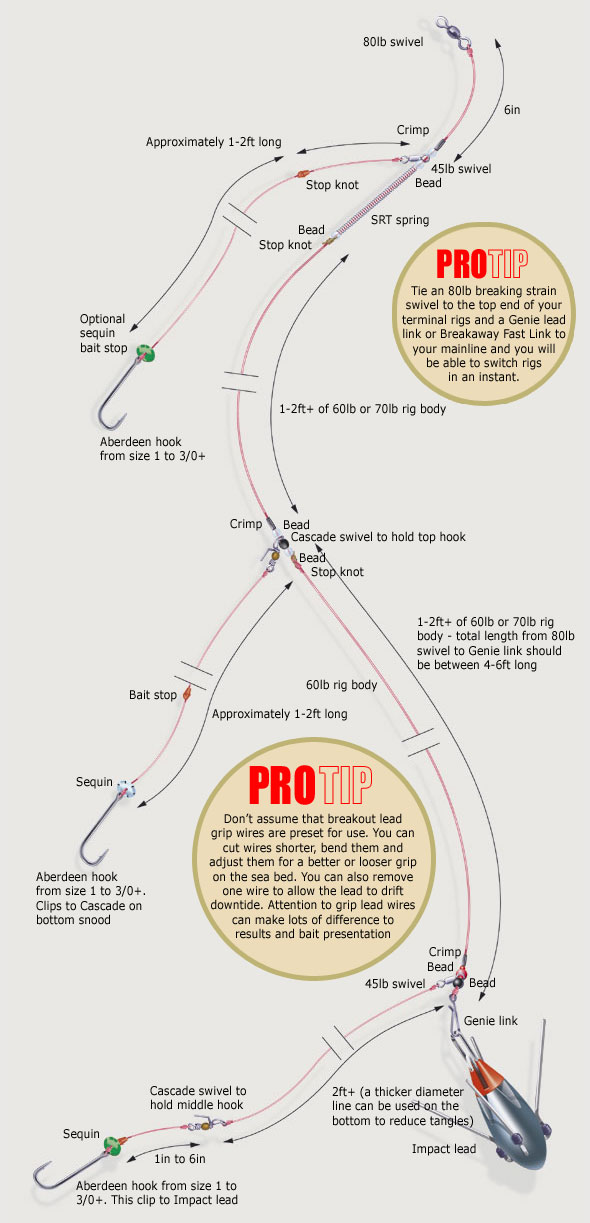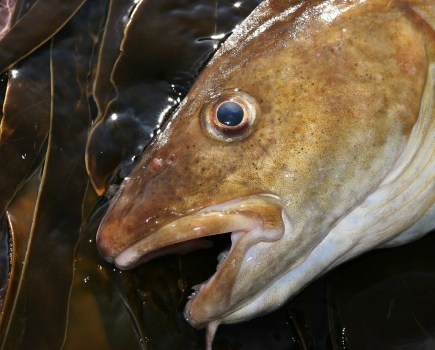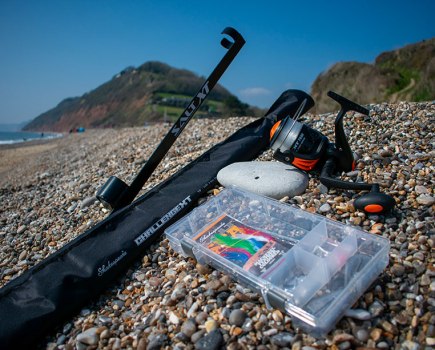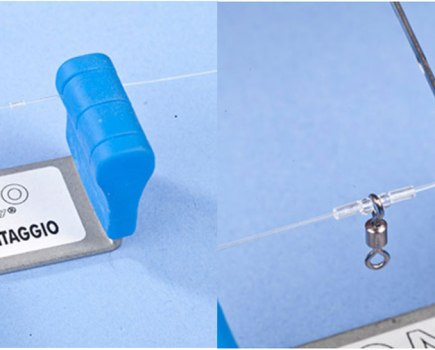Looking for those extra vital yards with three hook baits? Then try the clever loop rig, which puts bait so far out you’ll wonder why you never used it in the first place
IF ULTIMATE RANGE with triple baited hooks is essential to you then this clipped two-up, one-down rig, often called the loop rig, is what you need. For freelance fishing it can be adapted to a one-up, one-down rig, that is suitable as a long distance winter choice for all species that forage for food well out from the breakers, including codling and cod.
The design of this three-hook terminal rig ensures that the lower two baits are clipped directly in line astern of the lead weight. This reduces drag and enables the rig to be cast as if it were a two-hook clipped rig rather than a more unwieldy three hooker.
There are a host of bait clip systems available, although by far the most efficient and fail-safe release, especially suitable for this rig, is the pairing of a Breakaway Impact lead and two Breakaway Cascade swivels.
A Cascade is placed in the lower hook snood (2in to 8in from the hook) and it’s the loop of line produced when the one-up hook is clipped to this Cascade that gives the rig its popular name.
Some anglers seem paranoid about the loop, but it doesn’t impede or restrict the rig’s performance in any way.
The dimensions of the rig are important as a short stubby rig with all three hook baits spaced within a 2ft length will cast further than a rig with three hooks spaced over 4ft or more. Hook baits clipped closer to the lead weight will improve the balance and aerodynamic shape of the rig and that’s why the loop rig works so well, especially when used in a shorter length.
CONSTRUCTION ADVICE
- This is a powercasting rig, so the rig body line must be strong enough to withstand power casting. Use 60lb as a minimum, 70lb is better.
- Snood lengths are crucial to the rig’s antitangle performance and should not overlap too far. The lower snood does overlap the first hook length, but they only tangle during the retrieve which makes it ideal for fishing in strong tide. However, variations with very long overlapping snoods are used by match anglers for shybiting fish, while a stubby version with short hook snoods is far less prone to tangling and will cast even further because the hook baits, including the top hook, are closer to the lead.
- The addition of a Gemini SRT spring is crucial to this rig, as it is with many other extreme range clipped rigs. Placed under the top snood swivel, it provides the tension that prevents any of the bait clips from releasing early in flight. It’s only when the impact lead hits the water that the Cascades release simultaneously.
- Using a thicker diameter snood line for the longest, lower snood helps prevent tangling. You can return to a lighter hooklength for the line between Cascade swivel and hook. The length of this hook snood can be adjusted to suit the bait being used; 6in+ for two lugworms, 1in for a peeler crab bait.
- Crimps can be used but the bottom stop on the middle swivels and SRT spring are better constructed from Power Gum or mono using a four-turn Grinner knot. This allows snood tension to be adjusted or repositioned.
- Using a particular coloured bead holding the lower snood helps you identify the rig when sealed in a wallet.
WHAT CAN I USE THE RIG FOR?
Type of fishing: This rig and its variants, including the one-up, one-down, are perfect for both the match or freelance angler who wants to put his baits on clean ground at long-range. Species: Suitable for codling, whiting, dabs and dogfish, while the two-hook version is for cod, plaice, rays and smoothhounds.
Hook type and size: Aberdeen hooks work best and the hook size generally governs the type and size of fish you seek. Use size 1 or 2 for match fishing and taking small species. For bigger species a size 1/0 upwards to a 3/0 is more suitable.
Sea conditions etc: The loop rig is rated best for use in strong tide because its design allows an overlap between the two lower snoods, which can tangle. However, it is generally accepted that tangles only occur when the rig is retrieved. On impact with the sea and sea bed in tide it should stay untangled.







